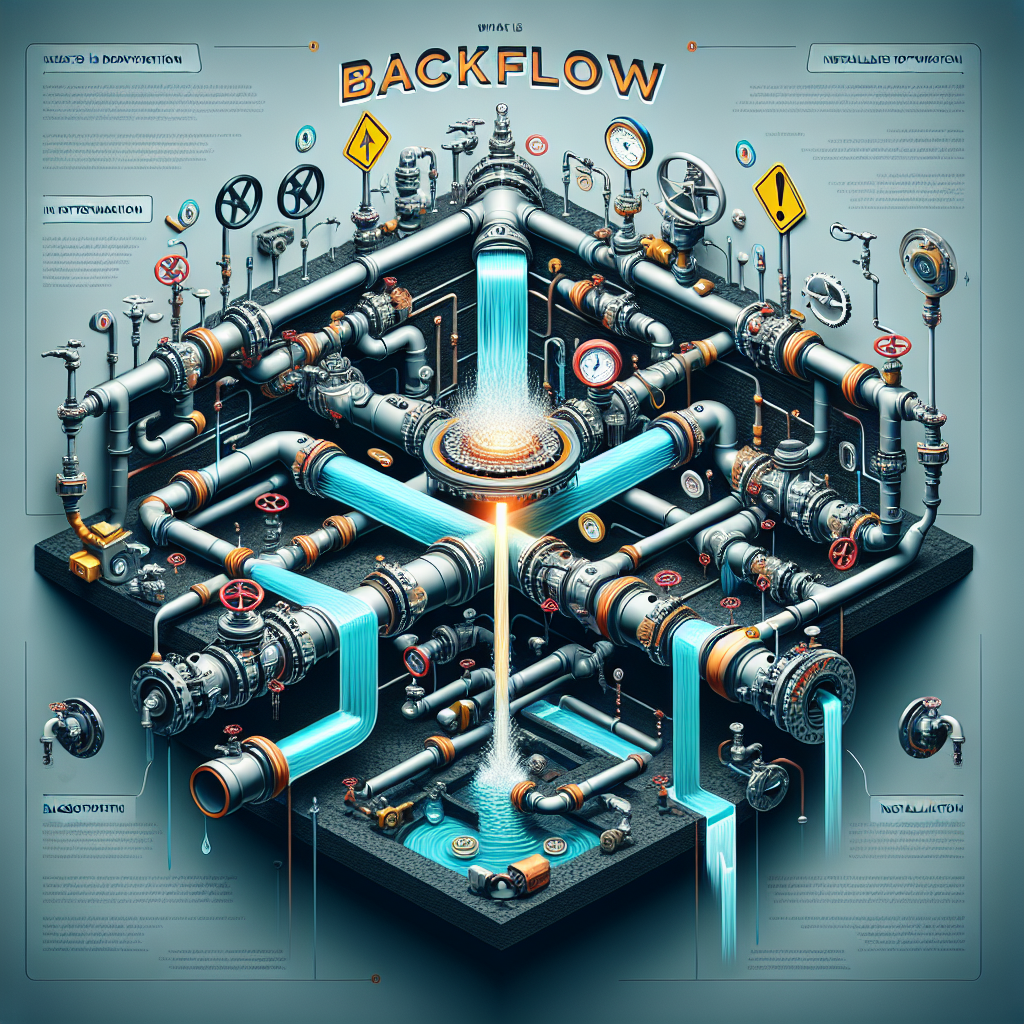Backflow is a term that might sound familiar to those in the plumbing and water management sectors, but what does it actually mean? To put it simply, backflow is the undesirable reversal of water flow in a plumbing system, which can lead to contamination of drinking water supplies. In this comprehensive guide, we’ll explore the ins and outs of backflow, its associated risks, and the preventative measures you can take to keep your water safe and clean.
Understanding Backflow: The Basics
The Definition of Backflow
Backflow occurs when the normal flow of water in a piping system is disrupted, causing the water to flow backward. This can happen for several reasons, including changes in water pressure due to fire hydrant use, pipe bursts, or a sudden increase in demand. When backflow occurs, untreated water can flow into the drinking water supply, posing severe health risks.
Types of Backflow
-
Backpressure Backflow: This occurs when the pressure in the downstream system is greater than that in the supply system. This can happen in scenarios such as elevated tanks or pumps that create excess pressure.
- Backsiphonage: This type happens when there is a drop in water pressure in the supply line, effectively sucking water back into the system. A common cause may be a broken water main or heavy usage in the local area.
The Risks of Backflow
Health Hazards
One of the most alarming risks associated with backflow is the potential contamination of the potable water supply. Various harmful substances, including bacteria, chemicals, and debris, can infiltrate the water supply. For example, if wastewater seeps back into the clean water line, it can introduce pathogens that can lead to illnesses ranging from gastrointestinal issues to more severe diseases.
Environmental Impact
Besides health risks, backflow can have detrimental effects on the environment. When contaminants enter the groundwater or local waterways, they can disrupt ecosystems, harm wildlife, and create long-term pollution issues.
Financial Consequences
The repercussions of backflow can extend beyond health and environmental risks. Property owners may face expensive fines, costly repairs, and increased insurance premiums if they fail to adhere to local regulations regarding backflow prevention.
Preventing Backflow: Essential Practices
Install Backflow Prevention Devices
The most effective way to combat backflow is to install backflow prevention devices, such as:
- Reduced Pressure Zone (RPZ) Assemblies: These devices prevent backflow by eliminating any pressure differential.
- Double Check Valves: This device has two check valves in series, providing an additional layer of protection against backflow.
- Atmospheric Vacuum Breakers: These devices are effective for systems that may experience backsiphonage.
Regular Inspections and Maintenance
Regular inspections of plumbing systems and backflow prevention devices are crucial. Ensure you have a licensed professional check your backflow prevention devices annually to verify they are functioning correctly.
Know Your Local Regulations
Backflow prevention requirements can vary based on location, so it’s crucial to familiarize yourself with local regulations. Many municipalities have strict guidelines in place to safeguard against backflow, and your compliance is essential to maintaining safe drinking water.
Educate Yourself and Others
Knowledge is power! Take the time to educate yourself and your community about the risks of backflow and the measures necessary to prevent it. Encourage discussions during community meetings or home improvement workshops to foster awareness.
Conclusion: Keeping Your Water Safe
In summary, backflow is a serious plumbing issue that can lead to health risks, environmental damage, and financial consequences. By understanding what backflow is, recognizing its risks, and implementing preventative measures, you can play a crucial role in ensuring clean and safe water for yourself and your community. Whether it’s through the installation of backflow prevention devices or regular system checks, taking action today can have a massive impact on the health and safety of our most precious resource—water.
If you have any concerns about backflow in your area, consult a local plumbing professional to ensure your home and community are protected.


